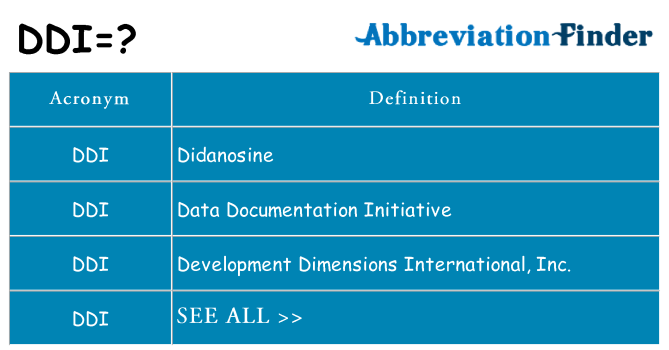Unlocking Student Success: Understanding Data-Driven Instruction (DDI) in Modern Education

Introduction to Data-Driven Instruction (DDI)
Modern education faces the challenge of meeting diverse student needs while ensuring high academic achievement for all. Data-Driven Instruction (DDI) has emerged as a powerful framework that empowers educators to make informed decisions, adapt teaching strategies, and maximize student success. By systematically collecting and analyzing data from various sources, teachers can identify learning gaps, tailor instruction, and foster continuous improvement in classrooms.

Source: newswire.com
What is Data-Driven Instruction?
Data-Driven Instruction (DDI) refers to educational practices that rely on systematic gathering, analysis, and use of student data to inform teaching decisions and improve learning outcomes. The core principle is simple: by understanding what students know and where they struggle, teachers can deliver targeted support and interventions that directly address their needs [1] [2] [3] .
Key components of DDI include:
- Collecting data from assessments, classroom observations, and assignments
- Analyzing results to find patterns, strengths, and learning gaps
- Adapting instruction based on evidence, not assumptions
- Engaging in ongoing cycles of assessment and adjustment
The DDI Cycle: Step-by-Step Implementation
Implementing DDI in a school or classroom requires a systematic approach. Below is a practical step-by-step guide to the DDI cycle, with detailed explanations and real-world illustrations.
1. Assess Student Learning
The process begins by administering assessments-these may include standardized tests, formative quizzes, exit tickets, or classroom observations. Frequent, specific, and actionable assessments are crucial. For instance, in an English classroom, a short multiple-choice quiz after a lesson helps identify misconceptions quickly [5] . This step ensures teachers gather accurate, up-to-date information about students’ understanding.
2. Analyze the Data
Once data is collected, teachers examine results to spot trends and issues. This analysis may reveal, for example, that a group of students consistently misses questions related to a specific math concept. Teachers can use data meetings or digital tools to break down results by student, class, or skill area. Technology platforms designed for education often streamline this process, making it easier to visualize and interpret data [4] .
3. Plan Targeted Instruction
Armed with insights from data, educators create targeted lesson plans or interventions. If analysis shows some students are struggling with reading comprehension, a teacher might design small group sessions or provide differentiated assignments. This step ensures instruction is tailored-rather than one-size-fits-all-maximizing relevance and impact [1] .
4. Implement and Monitor
Teachers deliver the planned instruction, closely monitoring student progress. Strategies such as aggressive monitoring (actively checking student work in real-time), regular questioning, and technology-integrated instruction help educators provide immediate feedback and adjust as needed [2] . Monitoring ensures interventions are effective and students remain engaged.
5. Reassess and Adjust
The cycle continues with new assessments, followed by further analysis and modifications to instruction. This iterative approach enables ongoing improvement and rapid response to student needs.
Benefits of Data-Driven Instruction
When implemented thoughtfully, DDI offers several proven advantages:
- Equitable Access: DDI provides all students, regardless of background or ability, with targeted support and opportunities to succeed [2] .
- Personalization: Teachers can customize instruction for individuals or small groups based on real performance data [1] .
- Improved Outcomes: Research and case studies have shown that DDI leads to increased student engagement and achievement, particularly when interventions are frequent and specific [5] .
- Accountability: DDI supports transparent reporting and helps schools meet state and federal accountability requirements, such as those established under the No Child Left Behind Act and Race to the Top initiatives [3] .
Real-World Applications: Case Studies and Examples
Across the United States, schools and districts have successfully implemented DDI to close achievement gaps and support student growth. For example, the Seaford School District uses bi-weekly data meetings, rigorous questioning, and technology tools to identify needs and adjust instruction quickly. Teachers regularly review assessment data, design targeted reteach plans, and monitor progress to ensure every student receives the support they need [2] .
In secondary English classrooms, teachers use short, frequent quizzes to pinpoint learning gaps, then offer additional instruction or practice to those students who need it. This approach enables more students to master challenging content and fosters higher overall achievement [5] .

Source: ar.inspiredpencil.com
Challenges and Solutions in DDI Implementation
While DDI offers significant benefits, its implementation is not without challenges. Common obstacles include:
- Data Overload: Teachers may feel overwhelmed by the volume of data available. To manage this, focus on a few key assessments and leverage technology platforms to organize and visualize information efficiently [4] .
- Time Constraints: Regular analysis and planning require dedicated time. Schools can address this by scheduling regular data meetings and providing planning resources.
- Training Needs: Effective DDI depends on teachers’ ability to interpret data and design responsive instruction. Ongoing professional development and collaboration are essential for building these skills.
Overcoming these challenges involves a combination of strategic planning, investment in professional learning, and the thoughtful use of technology to streamline data collection and analysis.
Getting Started with DDI: Practical Guidance
For educators and school leaders interested in implementing DDI, here are actionable steps to begin:
- Start small by selecting a few key assessments aligned to learning goals.
- Schedule regular time for collaborative data analysis with colleagues.
- Use available technology tools to simplify data collection and visualization.
- Identify specific student needs and set measurable goals for improvement.
- Design targeted instructional plans, monitor progress, and adjust as needed.
- Seek out professional development opportunities focused on DDI best practices. Many school districts and educational organizations offer training sessions-ask your district’s curriculum or assessment office for recommendations.
If you are a parent or student seeking more information about how DDI is used in your school, consider reaching out directly to your school’s administration or district office. You can also search for “data-driven instruction” on official school district websites or educational resource portals for additional guidance and resources.
Alternative Approaches and Complementary Strategies
While DDI is a highly effective framework, it works best when combined with other instructional strategies. For example, integrating project-based learning or social-emotional learning alongside DDI can create a more holistic educational experience. Schools may also adopt universal design for learning (UDL) principles to ensure that instructional adjustments are accessible to all students, including those with disabilities.
Key Takeaways
Data-Driven Instruction is a transformative approach that enables educators to make informed, responsive teaching decisions. By implementing a structured cycle of assessment, analysis, targeted planning, and adjustment, schools can deliver equitable, personalized learning experiences and drive measurable improvements in student achievement. While challenges exist, they can be addressed through collaboration, professional learning, and thoughtful use of technology. For more detailed support, consult your district’s curriculum office or explore reputable educational organizations dedicated to assessment and instruction.
References
- [1] Minicourse Generator (2025). Data-Driven Instruction – Dictionary of Education Terms.
- [2] Seaford School District (2012). Data Driven Instruction.
- [3] Wikipedia (2016). Data-driven instruction.
- [4] Forefront Education (2024). Technology for Data to Drive Instruction.
- [5] The Dusty Tsundoku (2017). Data Driven Instruction in the English Classroom.






